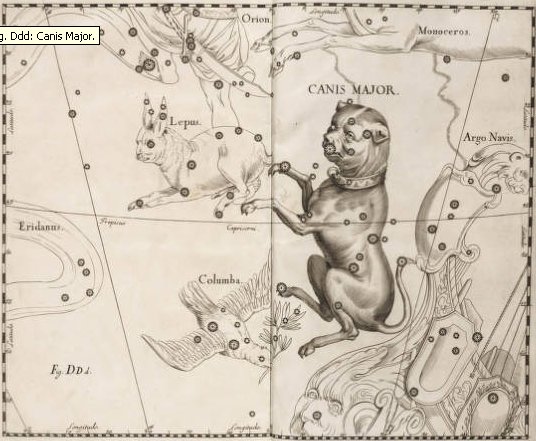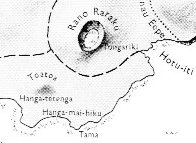The 'latitude' 52° at the beginning of the Oak Hull (Carina) appears - at a quick glance - to be almost perpendicular (kao) to the line between Azmidiske (ξ) and Naos (ζ.) in Puppis: Kao. 1. Side, edge, rim; kao gutu (or just kao), labia minora. 2. Steep, almost perpendicular; thin, skinny. Motu Kaokao, name of one of the islets opposite Orongo, with a steep shape. Vanaga. Cloth, clothing, garb. (Perhaps a variant of kahu.) Kaokao, side, flank, ribs, lateral. P Pau.: kaokao, the side, flank. Mgv.: kaokao, the side, flank. Mq.: kaokao, id. Ta.: aoáo, id. In Nuclear Polynesia this is particularized, in Samoa to the armpit, in Tonga and Futuna to the sides of the canoe. Therefore it may be considered a borrowing from the Tongafiti. Churchill.
And presumably both these stars in Puppis were denoted 1100 in order to indicate they should be considered together (like how the twins 'alfa and omega' - or 'emet and met' - could be used for explaining the short distance between the apple tree and its fruit). This is the design of Newton, with the force of gravitation on the back side and the force of growth on the other:
... A very detailed myth comes from the island of Nauru. In the beginning there was nothing but the sea, and above soared the Old-Spider. One day the Old-Spider found a giant clam, took it up, and tried to find if this object had any opening, but could find none. She tapped on it, and as it sounded hollow, she decided it was empty. By repeating a charm, she opened the two shells and slipped inside.
She could see nothing, because the sun and the moon did not then exist; and then, she could not stand up because there was not enough room in the shellfish. Constantly hunting about she at last found a snail. To endow it with power she placed it under her arm, lay down and slept for three days. Then she let it free, and still hunting about she found another snail bigger than the first one, and treated it in the same way. Then she said to the first snail: 'Can you open this room a little, so that we can sit down?' The snail said it could, and opened the shell a little. Old-Spider then took the snail, placed it in the west of the shell, and made it into the moon. Then there was a little light, which allowed Old-Spider to see a big worm. At her request he opened the shell a little wider, and from the body of the worm flowed a salted sweat which collected in the lower half-shell and became the sea. Then he raised the upper half-shell very high, and it became the sky. Rigi, the worm, exhausted by this great effort, then died. Old-Spider then made the sun from the second snail, and placed it beside the lower half-shell, which became the earth ...
However, the 'Little Shield' (Azmidiske, ξ) was 4 days earlier than Naos (ζ), viz. at the opposite side compared to the great old Eagle (Altair, *300).
... Sternforward Argō by the Great Dog's tail // Is drawn; for hers is not a usual course ... Experience had shown that Sirius always rose simultaneously with the Sun in day 181 (June 30). ... The Sothic cycle was based on what is referred to in technical jargon as 'the periodic return of the heliacal rising of Sirius', which is the first appearance of this star after a seasonal absence, rising at dawn just ahead of the sun in the eastern portion of the sky. In the case of Sirius the interval between one such rising and the next amounts to exactly 365.25 days - a mathematically harmonious figure, uncomplicated by further decimal points, which is just twelve minutes longer than the duration of the solar year ... In ancient Egypt they thought Sirius was behind the yearly rise of the Nile ... the seasonal cycle, throughout the ancient world, was the foremost sign of rebirth following death, and in Egypt the chronometer of this cycle was the annual flooding of the Nile ...
The tail of the Great Dog (Canis Major) - viz. Aludra (the Virgin, η) - appears to enter into (ki roto ki) the Little Shield high up in Puppis from where the offspring of the Jackal (Canis Major) - viz. his Puppy - will emerge: Roto. 1. Inside. 2. Lagoon (off the coast, in the sea). 3. To press the juice out of a plant; taheta roto pua, stone vessel used for pressing the juice out of the pua plant, this vessel is also just called roto. Roto o niu, east wind. Vanaga. 1. Marsh, swamp, bog; roto nui, pond; roto iti, pool. 2. Inside, lining; o roto, interior, issue; ki roto, within, into, inside, among; mei roto o mea, issue; no roto mai o mea, maternal; vae no roto, drawers. Churchill. Ana-roto. Spica.
The rhomb inside the last of these 6 shields, just in front of the Oak named Robur Carolinum, could depict the outline of the Aquila constellation - after the Tail of the Serpent:
... The myth goes on to tell of the blessed boat's arrival in the marshes of the Delta, and of how Set, one night hunting the boar by the light of the full moon, discovered the sarcophagus and tore the body into fourteen pieces, which he scattered abroad; so that, once again, the goddess had a difficult task before her. She was assisted, this time, however, by her little son Horus, who had the head of a hawk, by the son of her sister Nephtys, little Anubis, who had the head of a jackal, and by Nephtys herself, the sister-bride of their wicked brother Set. Anubis, the elder of the two boys, had been conceived one very dark night, we are told, when Osiris mistook Nephtys for Isis; so that by some it is argued that the malice of Set must have been inspired not by the public virtue and good name of the noble culture hero, but by this domestic inadventure. The younger, but true son, Horus, on the other hand, had been more fortunately conceived - according to some, when Isis lay upon her dead brother in the boat, or, according to others, as she fluttered about the palace pillar in the form of a bird ...
Anubis had a long snout, whereas Sirius and his puppy had a short one:
... The dream soul went on and came to Tama. She named the place 'Tama, an evil fish (he ika kino) with a very long nose (he ihu roroa).' ... [E:8] Ihu. 1. Nose; ihu more, snub nose, snub-nosed person. 2. Ihuihu cape, reef; ihuihu - many reefs, dangerous for boats. 3. Ihu moko, to die out (a family of which remains only one male without sons); koro hakamao te mate o te mahigo, he-toe e-tahi tagata nó, ina aana hakaara, koîa te me'e e-kî-nei: ku-moko-á te ihu o te mahigo, when the members of family have died and there remains only one man who has no offspring, we say: ku-moko-á te ihu o te mahigo. To disappear (of a tradition, a custom), me'e ihu moko o te tagata o te kaiga nei, he êi, the êi is a custom no longer in use among the people of this island. 4. Eldest child; first-born; term used alone or in conjunction with atariki. Vanaga. 1. Nose, snout, cape T (iju G). Po ihuihu, prow of a canoe. P Pau.: ihu, nose. Mgv.: ihu, nose; mataihu, cape, promontory. Mq., Ta.: ihu, nose, beak, bowsprit. Ihupagaha, ihupiro, to rap on the nose, to snuffle. 2. Mgv.: One who dives deep. Ta.: ihu, to dive. Churchill. Sa.: isu, nose, snout, bill. Fu., Fakaafo, Aniwa, Manahiki: isu, the nose. Nuguria; kaisu, id. Fotuna: eisu, id. Moiki: ishu, id. To., Niuē, Uvea, Ma., Ta., Ha., Mq., Mgv., Pau., Rapanui, Tongareva, Nukuoro: ihu, id. Rarotonga: putaiu, id. Vaté: tus, id. Viti: uthu, nose. Rotumā: isu, id. ... usu and ngusu ... serve as transition forms, usu pointing to isu the nose in Polynesia and ngusu to ngutu the mouth, which is very near, nearer yet when we bear in mind that ngutu the mouth is snout as well and that isu the nose is snout too ... Churchill 2.
|
||||||||||||||||||||||||||||||||||||||||||||||||||||||||||||||||||||||||||||||||||||||||||||||||||||||||||||||||||||||||||||||||||||||||||
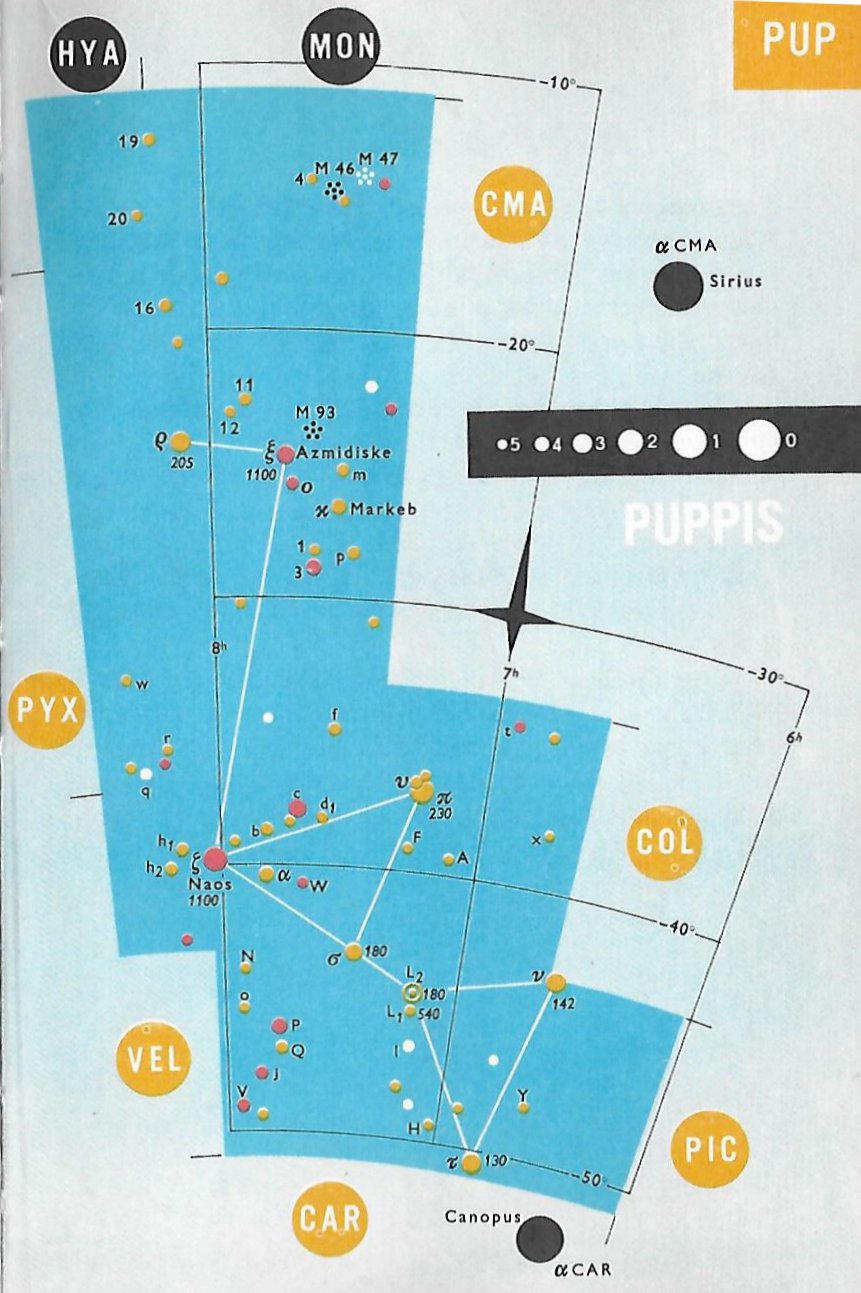






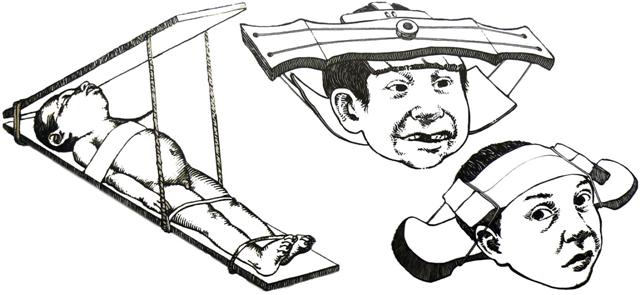
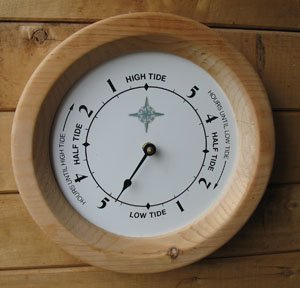

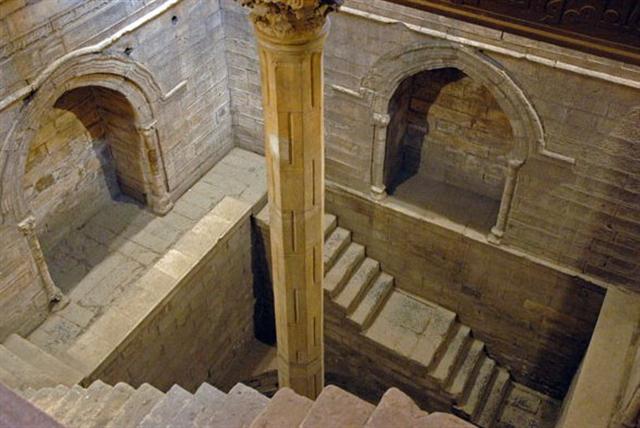


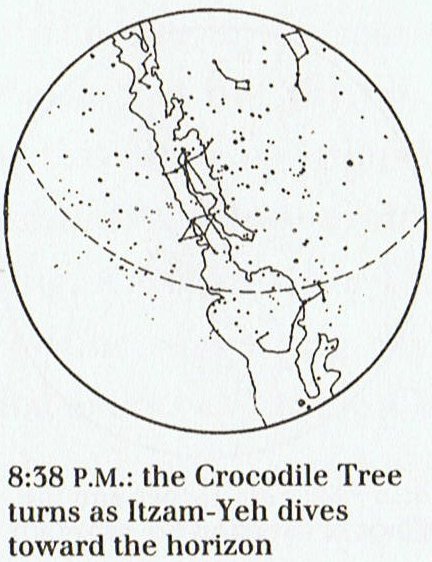

.jpg)
.jpg)
